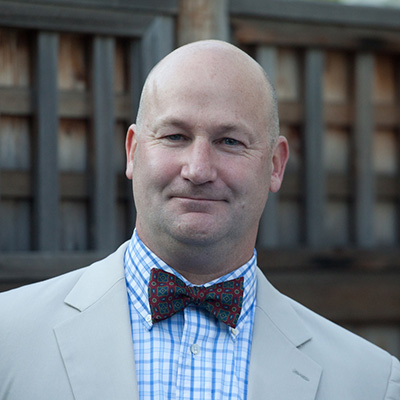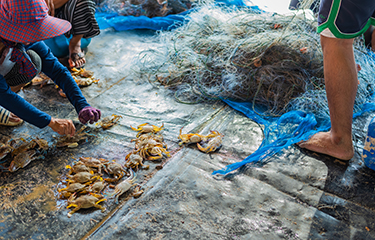The seafood industry continues to show its commitment to improving the sustainability of fisheries worldwide, as evidenced by a new report from environmental research and advisory firm CEA Consulting.
In 2019, 136 fishery improvement projects (FIPs) existed worldwide, a 64 percent increase over 2014’s tally of 83, according to CEA Consulting’s "2020 Global Landscape Review of FIPs" report. What’s more, seafood businesses are now increasingly leading the charge where FIPs are concerned, filling the spots that NGOs once did. Currently, seafood businesses are guiding the implementation of 70 FIPS, up from 49 in 2015, while NGOs are assuming more technical support and advisory roles in the space, the report found.
These findings are indicative that seafood companies are serious about investing in the future of the industry, according to Anova Food Sustainability Manager Helen Packer.
“FIPs are an investment in the future viability of our industry, so it’s great to see more companies stepping up to lead,” Packer said. “Now, businesses need to focus on outcomes, and the report recommends best practices that lead to more success in FIPs."
Greater industry ownership isn’t the only change being observed on the FIP landscape – the report also found that FIPs have been increasingly working to improve and support artisanal fisheries and developing world fisheries as the model refines. Initially developed in European and Russian fisheries, the FIP model has since expanded into new geographies, incorporating an array of species, many of which require different and unique improvements to address challenging social and economic conditions and under-resourced management, according to CEA Consulting Director Max Levine, who also served as a principal author of the new report.
“FIPs are engaging a wider range of species, many of which are in complicated socio-economic and governance contexts,” Levine said. “FIP implementers are adapting by focusing on collective impact to drive policy change or on engaging fishing communities to deliver social and economic benefits. But observers need to base their expectations on the reality that today’s FIPs face challenges different than those faced by early FIPs.”
Implementers and FIPs do seem to be adapting, the report said – globally, projects are reporting progress in fisheries management and reductions in overfishing. Even with more challenges, the report found that FIPs today are making more improvements than they did back in 2015, and are doing so across a broader range of species, including salmon, sardines, lobster, mahi, shrimp, and other fisheries. Moreover, the number of FIPs earning eco-certification has doubled in the last five years, a promising increase, the report noted.
Another evolution seen in the FIP model over the last several years is the inclusion of social issues – about 20 percent of FIPs have reported working on social issues alongside environmental improvements, according to the report. The prevalence of FIPs in artisanal fisheries of less-developed countries; more expansive news coverage of human rights abuses in the seafood supply chain; and a greater focus on social concerns by conservation nonprofits and foundations are all cited by the report as factors for the increased inclusion of social issues in FIPs.
The seafood industry is learning that the FIPs drive positive social change through the supply chain and improve the livelihoods and communities associated with fishing and seafood, CEA Consulting Senior Associate John Thomas, a principal author of the report, said.
“FIP implementers are increasingly attentive to the reality that fisheries are about people and communities, as well as resources and the environment,” Thomas said. “But FIPs need more and better data to understand how their work affects fishing families and communities.”
The report looked at issues that impact the success or rate of success for improving fisheries, and drew insights from more than 250 FIP stakeholders to identify characteristics that contribute to progress. The research yielded that the state of a fishery at the time a FIP launches affects its rate of progress, with a FIP in a fishery with weaker initial environmental performance often taking longer to show progress than a FIP in a relatively healthy fishery.
A number of other factors that can also influence how effective a FIP can be, CEA Consulting researchers discovered, including capable leadership, the effective engagement of governments and other key stakeholders, consistent effort from year-to-year, and market leverage. Different species harvested or different types of vessels or fleets can be more “FIP-friendly” and accelerate progress as well.
Government management was also cited in the report as a key influence on the rate of achieving success in a FIP. A government’s ability to manage fisheries and enforce regulations will impact the time a FIP takes to reach its objectives.
“FIPs don’t work in a vacuum,” Levine said. “When FIPs are able to effectively engage government, progress happens faster and is more durable.”
A more robust support system for project implementers exists now, helping to drive FIP creation and progress. The Sustainable Fisheries Partnership’s FIP rating system, the FisheryProgress.org reporting website operated by FishChoice, and the Fishery Improvement Project Database hosted by the University of Washington are all examples of tools used by current FIP implementers, seafood buyers, and the research community.
“We’re committed to accelerating progress going forward, by encouraging FIPs to be even more transparent and helping buyers identify the highest-performing FIPs,” FishChoice Program Director Kristin Sherwood said. “We’re proud that FisheryProgress has become the go-to resource for information on FIPs’ progress.”
Commissioned by the Walton Family Foundation, the David and Lucile Packard Foundation, and the Gordon and Betty Moore Foundation, the 2020 Global Landscape Review of FIPs report, which included significant industry interviews and input, will inform the sustainable seafood grantmaking of these foundations.
“It’s encouraging to see more business engagement in in the process because it’s a bottom line issue for them. What’s good for the fishery and the environment is also good for their bottom lines – we encourage industry to take an even larger role in fishery improvement going forward,” The Walton Family Foundation’s Teresa Ish said. “Foundations invested early in fishery improvement projects because they bring industry, nonprofits, and governments together to conserve a resource they all need.”
Photo courtesy of BLUR LIFE 1975/Shutterstock







